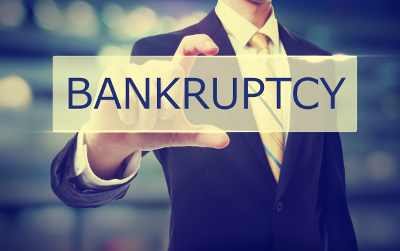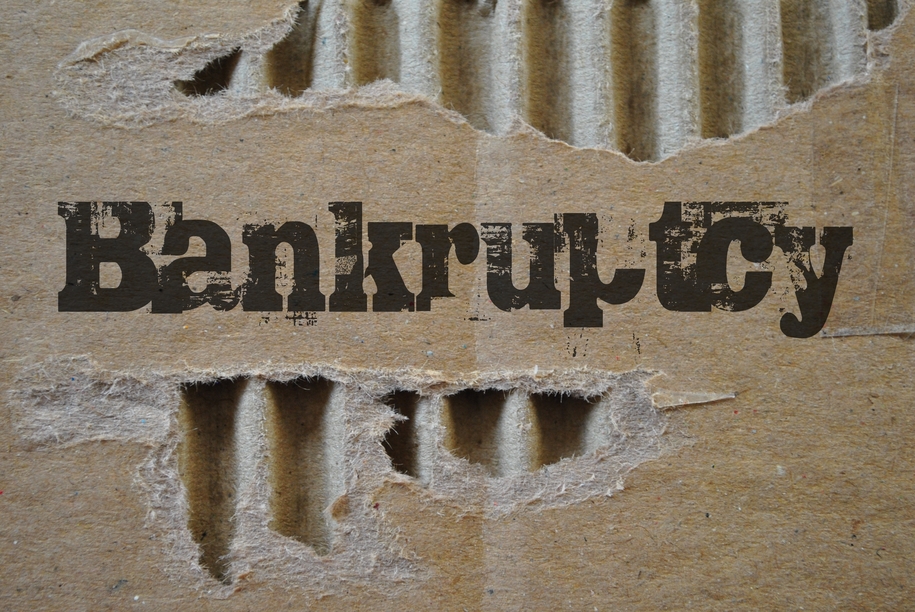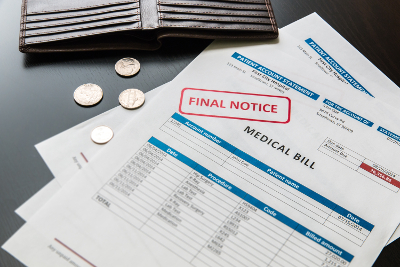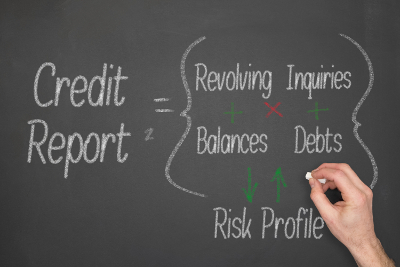Lien Stripping in Bankruptcy
Introduction to Lien Stripping in Bankruptcy
Lien stripping can be an important tool for individuals going through Chapter 13 bankruptcy who are upside down on their mortgages. Lien stripping in bankruptcy is a way for individuals to get rid of their junior liens on their homes, such as second or even third mortgages.i Lien stripping is only available to individuals who filed for Chapter 13 bankruptcy, and not Chapter 7 bankruptcy.
Chapter 13 Bankruptcy Generally
Chapter 13 bankruptcy is considered the “reorganization bankruptcy”, as compared to the Chapter 7 bankruptcy, which is known as the liquidation bankruptcy. In Chapter 7 bankruptcy, the individual has to sell off their non-exempt assets in a liquidation process. Those funds are then used to pay off as many creditors as possible. Chapter 13 bankruptcy allows the individual, or business, to keep their property.ii Chapter 13 bankruptcy is used to have the individual create a repayment plan, that they will use over the proceeding three to five years to pay off their creditors.iii The amount that the individual pays during that three to five year period will be a reduced amount from what they typically pay.iv The reduced payment allows the individual to catch up financially in a sense and hopefully stabilize by the end of the repayment period. It is fairly common that all the debts will be paid off during that repayment period.v
 Just like Chapter 7 bankruptcy, the individual who wishes to file for Chapter 13 must be eligible to file. Since Chapter 13 requires a repayment plan, which has to be approved by the court, the individual has to prove that they have sufficient income to participate in the repayment plan.vi The court will require proof of the income and it must be from legal sources.vii Once the individual files for Chapter 13 bankruptcy, they must be very diligent about making payments on the repayment plan. Missing or stopping payments could have negative ramifications on the individual’s bankruptcy proceeding, including the court denying discharging any remaining debts at the end of the bankruptcy.
Just like Chapter 7 bankruptcy, the individual who wishes to file for Chapter 13 must be eligible to file. Since Chapter 13 requires a repayment plan, which has to be approved by the court, the individual has to prove that they have sufficient income to participate in the repayment plan.vi The court will require proof of the income and it must be from legal sources.vii Once the individual files for Chapter 13 bankruptcy, they must be very diligent about making payments on the repayment plan. Missing or stopping payments could have negative ramifications on the individual’s bankruptcy proceeding, including the court denying discharging any remaining debts at the end of the bankruptcy.
The debt that the individual has cannot exceed certain amounts, depending on the debts. For secured debts, the amount of debt the individual has cannot exceed $1,149,525 and for unsecured debts, the amount of debt cannot exceed $385,175.viii If the individual’s debt exceeds these amounts, there is Chapter 11 bankruptcy as an option – but individuals do not commonly use it. Once the individual determines that they are eligible to file for Chapter 13 bankruptcy, they must also complete the credit counseling as provided by the United States Trustee.ix Once this has been completed, the individual will be clear to file for Chapter 13 bankruptcy, if they still chose to do so.
Lien Stripping Generally
Lien stripping generally allows the bankruptcy court to essentially take the individual’s second mortgage, or even third mortgage, and convert it from a secured debt into an unsecured debt.x The court is able to do this through court order, which requires the lender to remove its lien from the property.xi Generally speaking, lien stripping allows the individual to get rid of what is called “wholly unsecured” liens that are on that individual’s property.xii When a mortgage, or a lien, is put on the individual’s home, it has priority against other liens.xiii Priority is determined based upon the recording system in that county. If the mortgage lender does not record their lien, and another mortgage company records their lien first – then the second company will have priority.xiv For the most part, the earlier liens will have priority though.
If the individual’s home is foreclosed upon, then the first mortgage lender will be the first to be paid from the sales proceeds, before the later lenders see any funds.xv In many cases, if the individual owes more on their first mortgage than the fair market value of the house, the second mortgage lender will not receive any funds from the sale.xvi If the lender does not get any funds from the sale, then the second (or third) mortgage will be considered “wholly unsecured,” which will allow a bankruptcy court to strip it during the Chapter 13 bankruptcy.xvii
What Happens to Stripped Liens and When Does it Get Stripped Away?
When liens are stripped, either from the home going into foreclosure and the lien becoming “wholly unsecured,” or through the court ordering the lien to become “wholly unsecured,” the stripped liens will receive the same treatment as the unsecured debts during the bankruptcy.xviii Other unsecured debts commonly include credit cards.xix After discharge, the owner of the stripped lien will be required to remove their lien from the home, whether or not they receive any funds from the bankruptcy process.
Now, the stripped lien will not be removed from the individual’s home until the Chapter 13 bankruptcy repayment plan is complete and the discharge is received.xx If the bankruptcy is discharged, for any reason, before the bankruptcy plan is complete, the second mortgage lien will not be stripped and will remain on the home.xxi
Lien Stripping in Bankruptcy Chapter 7
For the majority of states, individuals can only strip liens during a Chapter 13 bankruptcy.xxii However, there are a few states that will allow an individual to strip liens during a Chapter 7 bankruptcy as well.xxiii Alabama, Florida, and Georgia provide the opportunity for lien stripping during the Chapter 7 bankruptcy filing, though it is not guaranteed.
Conclusion to Lien Stripping in Bankruptcy
Lien stripping can be an important tool for individuals going through Chapter 13 bankruptcy who are upside down on their mortgages. Lien stripping in bankruptcy is only available to individuals who filed for Chapter 13 bankruptcy, and not traditionally Chapter 7 bankruptcy.
i See Getting Rid of Second Mortgages in Chapter 13 Bankruptcy NOLO Legal Encyclopedia. (Accessed July 2, 2017). http://www.nolo.com/legal-encyclopedia/rid-second-mortgage-chapter-13-bankruptcy.html
ii See An Overview of Chapter 13 Bankruptcy. NOLO Legal Encyclopedia. (Accessed July 2, 2017). http://www.nolo.com/legal-encyclopedia/chapter-13-bankruptcy-overview-30099.html
iii Id.
iv Id.
v Id.
vi See An Overview of Chapter 13 Bankruptcy. NOLO Legal Encyclopedia. (Accessed July 2, 2017). http://www.nolo.com/legal-encyclopedia/chapter-13-bankruptcy-overview-30099.html
vii Id.
viii Id.
ix See An Overview of Chapter 13 Bankruptcy. NOLO Legal Encyclopedia. (Accessed July 2, 2017). http://www.nolo.com/legal-encyclopedia/chapter-13-bankruptcy-overview-30099.html
x See What is Lien Stripping in Chapter 13 Bankruptcy? NOLO Legal Encyclopedia. (Accessed July 2, 2017). http://www.nolo.com/legal-encyclopedia/lien-stripping-chapter-13-bankruptcy.html
xi Id.
xii Id.
xiii Id.
xiv See What is Lien Stripping in Chapter 13 Bankruptcy? NOLO Legal Encyclopedia. (Accessed July 2, 2017). http://www.nolo.com/legal-encyclopedia/lien-stripping-chapter-13-bankruptcy.html
xv Id.
xvi Id.
xvii Id.
xviii See Getting Rid of Second Mortgages in Chapter 13 Bankruptcy NOLO Legal Encyclopedia. (Accessed July 2, 2017). http://www.nolo.com/legal-encyclopedia/rid-second-mortgage-chapter-13-bankruptcy.html
xix Id.
xx See What is Lien Stripping in Chapter 13 Bankruptcy? NOLO Legal Encyclopedia. (Accessed July 2, 2017). http://www.nolo.com/legal-encyclopedia/lien-stripping-chapter-13-bankruptcy.html
xxi Id.
xxii See What is Lien Stripping in Chapter 13 Bankruptcy? NOLO Legal Encyclopedia. (Accessed July 2, 2017). http://www.nolo.com/legal-encyclopedia/lien-stripping-chapter-13-bankruptcy.html
xxiii Id.




